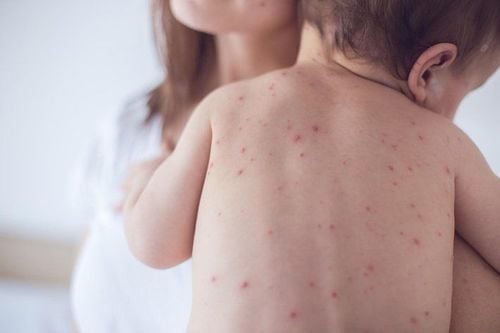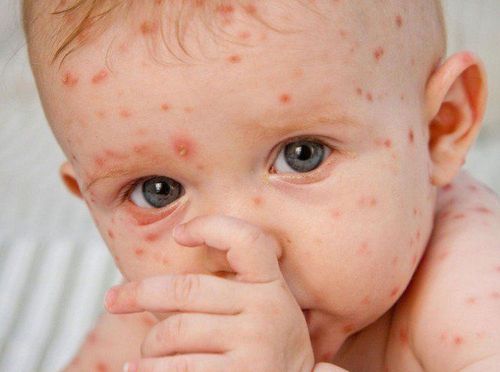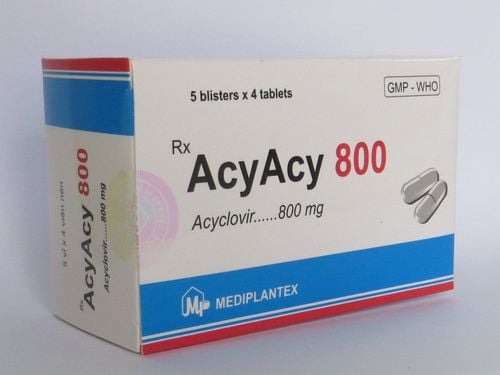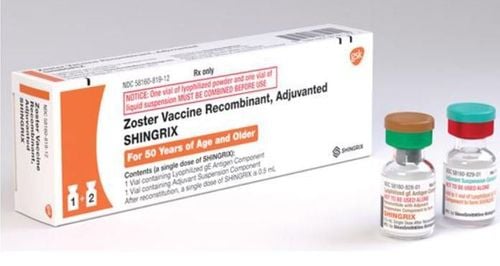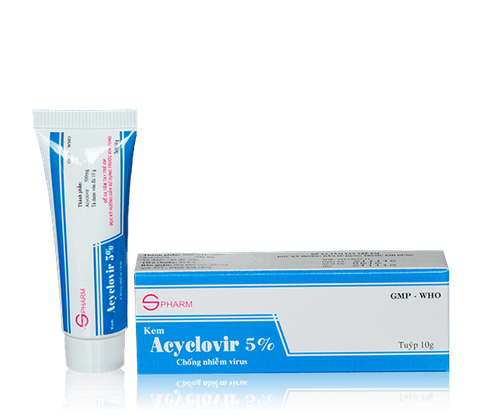This is an automatically translated article.
The article is professionally consulted by Doctor, Professor, Dr. Pham Nhat An - Director of Pediatric Center cum Head of Pediatric Inpatient Department - Vinmec Times City International HospitalChickenpox circulates year-round throughout the country, but winter-spring is the outbreak time. In hospitals, the number of chickenpox cases showed signs of increasing with many dangerous complications. This is an acute infectious disease, mainly found in children with a very high contagiousness. To help the patient's family know how to take care of the child and timely detect and treat when the child has chickenpox.
Below are the instructions of Professor Dr. Pham Nhat An - Director of the Pediatric Center at Vinmec Times City Hospital.
1. Chickenpox
Chickenpox is an infectious disease caused by a virus called Varicella Zoster Virus and accounts for more than 90% of people who have not been vaccinated. The disease usually occurs in the winter and spring and the children who get chickenpox are mainly children under 10 years old.
Virus that causes chickenpox is spread mainly through the air, healthy people are easily infected if they breathe in droplets when chickenpox patients cough, sneeze or have a runny nose,..., especially children. .
The disease can be spread from blisters when they burst, from damaged skin or sores of an infected person. In particular, pregnant women who are unfortunately infected will be very easily transmitted to the fetus through the placenta.
Trắc nghiệm: Nhận biết sớm dấu hiệu chậm phát triển thể chất và trí tuệ ở trẻ
Nếu 6 tuổi không biết đếm số, 7 tuổi vẫn chưa phân biệt được giữa thực tế và tưởng tượng thì có thể bé chậm phát triển thể chất và trí tuệ hơn so với bạn bè cùng lứa. Bạn đã nhận biết được các dấu hiệu bất thường sớm này chưa? Cùng làm nhanh bài trắc nghiệm sau để trang bị thêm kiến thức cho mình nhé!
The following content is prepared under supervision of Thạc sĩ, Bác sĩ y khoa, Ma Văn Thấm , Nhi , Phòng khám Đa khoa Quốc tế Vinmec Dương Đông(Phú Quốc)
2. Typical symptoms of chickenpox
Incubation period: 14 - 17 days (usually no clinical symptoms).
Onset period: About 1 day, there may be no fever or low fever, young children often refuse to play or cry. There are cases of high fever 39-40 degrees Celsius, tossing and turning, delirium convulsions, accompanied by sore throat, inflammation of upper respiratory tract secretions.
Full stage (rash growth period):
At first they are red maculopapular rash, a few hours later they become clear water blisters, very shallow as if they are placed on the skin, after 24 to 48 hours they turn yellow. 2mm floating sphere on skin surface. The rash is scattered all over the body, including the hairline and in the mouth, almost absent on the soles of the feet and hands. The rash occurs every 3-4 days, so on one area of the skin can see rashes of different ages. After 4-6 days, chickenpox nodules dry on their own, scab dark brown and fall off after a week, leaving no permanent scars, unless ulcers and superinfection are present. Complications: Chickenpox can cause skin infections, blood infections, pneumonia, encephalitis, bone and joint infections, etc., if not treated promptly.
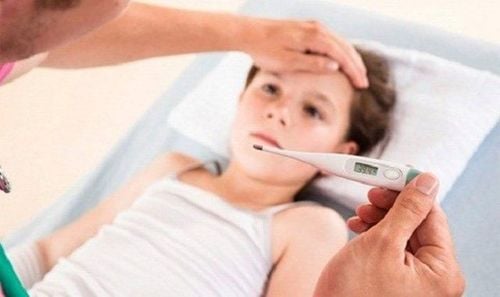
3. Instructions for taking care of children with chickenpox
Put children with chickenpox in a negative pressure isolation room to prevent infecting others. When they leave the hospital, they still have to be isolated until they are completely cured.
Caregivers should wear an N95 mask (if they have not had chickenpox) or a surgical mask (if they have been sick or vaccinated against chickenpox). If the child must be taken out of the room for specialist examination or other investigations, the child should wear a mask. Wash hands before and after each child care. Use a solution of blue - methylene or Castellani to dab on broken or succulent burns. Combination of antibiotics and/or fever reducers for children with chickenpox as directed by medical staff. Daily hygiene of the nose and throat for children with 0.9% physiological saline solution. Wear soft, sweat-wicking fabrics and pay special attention to ensuring the baby's skin hygiene to avoid complications: Change clothes and bathe the child daily with warm water in the bathroom. Give your child soft, liquid, easy-to-digest foods, drink a lot of water, especially fruit juice, and eat cold if there are blisters/ulcers in the mouth. Use a solution of blue - methylene or Castellani to dab on broken or succulent burns. Note:
Avoid breaking chickenpox spots because it is easy to cause superinfection and can cause scarring. Do not use the leaves of the plant to bathe and apply on the chickenpox node of the patient. Do not use oral or topical medications unless directed by your doctor. Chickenpox is a dangerous disease that can leave complications if not examined and cared for well. Therefore, when children show signs of chickenpox, parents need to soon take their children to medical facilities and specialized hospitals for examination and treatment.
Pediatrics Department at Vinmec International General Hospital is the address for receiving and examining diseases that infants and young children are susceptible to such as: viral fever, bacterial fever, otitis media, pneumonia in children , chickenpox, ... With modern equipment, sterile space, minimizing the impact as well as the risk of disease spread. Along with that is the dedication from the doctors with professional experience with pediatric patients, making the examination no longer a concern of the parents.
Please dial HOTLINE for more information or register for an appointment HERE. Download MyVinmec app to make appointments faster and to manage your bookings easily.






